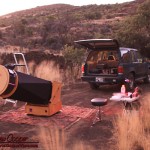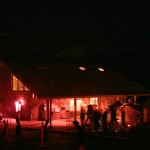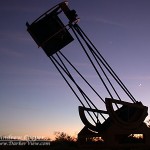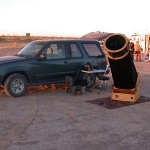Planning a night of observing is a challenge. There is the choice of equipment, setting up observing lists of objects to target. And then there is deciding where to go.
Finding a dark spot can be a challenge in Hawai’i. Almost every bit of land is gated and tied up in bureaucratic rules. We often use the area around the Mauna Kea VIS to observe. Located at 9,000ft on the south side of Mauna Kea the area has much to recommend it for amateur astronomy. This land is under the administrative control of OMKM, who actively support astronomy, both professional and amateur. But the area does have a number of lights, and there is regular vehicle traffic, even in the middle of the night. Thus I have been actively looking for other places.

State land is an interesting issue in Hawai’i. No camping is allowed outside of designated sites, period. But, according to the DLNR administrative rules it is not camping unless you are… “in possession of a backpack, tents, blankets, tarpaulins, or other obvious camping paraphernalia, any time after one hour after sundown until sunrise in a forest reserve” (Section §13-104-2 Hawai’i Division of Forestry and Wildlife). I made certain I had no “camping paraphernalia” with me. I am merely picnicking… in the middle of the night.




